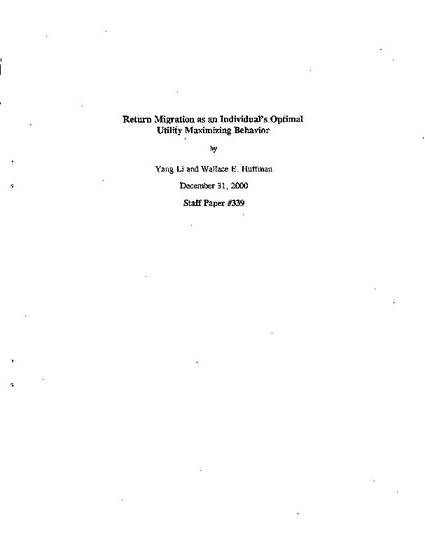
Article
Return Migration as an Individual's Optimal Utility Maximizing Behavior
Economic Staff Paper Series
Document Type
Report
Publication Date
12-31-2000
Number
339
Disciplines
Abstract
The paper presents a model of location behavior of a multi-period finite-life utility maximizing individual who consumes leisure, purchased goods, and local amenities and is retired in the final period of life and empirical evidence from a hazard rate analysis using micro-data on return migration for ^erto Rican bom males who worked in the United States during the 1980s. An individual is modeled as considers staying in his home country or migrating to a host country. We show that it is optimal to migrate in the first period or to stay at in the home country. Given that migration occurs, return migration is likelywhen an individual retires. Thereason is local amenities, including nearness to family, friendly culture, please climate, and familiar places, which are complementary with leisure, weigh heavily in consumption decisions at this time. In the hazard rate analysis, we find that factors affecting wage differentials between the United States and Puerto play a role, but the strongly convex effect of an individual's age on the hazard rate for return migration supports the hypothesis ofreturning home in retirement to consume home-country amenities. However, the hazard ofreturn migration is concave duration dependen
Citation Information
Yang Li and Wallace E. Huffman. "Return Migration as an Individual's Optimal Utility Maximizing Behavior" (2000) Available at: http://works.bepress.com/wallace-huffman/33/
